A circular wire loop of radius R, mass m carrying current I lies on a rough surface (as shown in Fig. 1.86). There is a horizontal magnetic field How large can the current I be before one edge of the loop will lift off the surface?
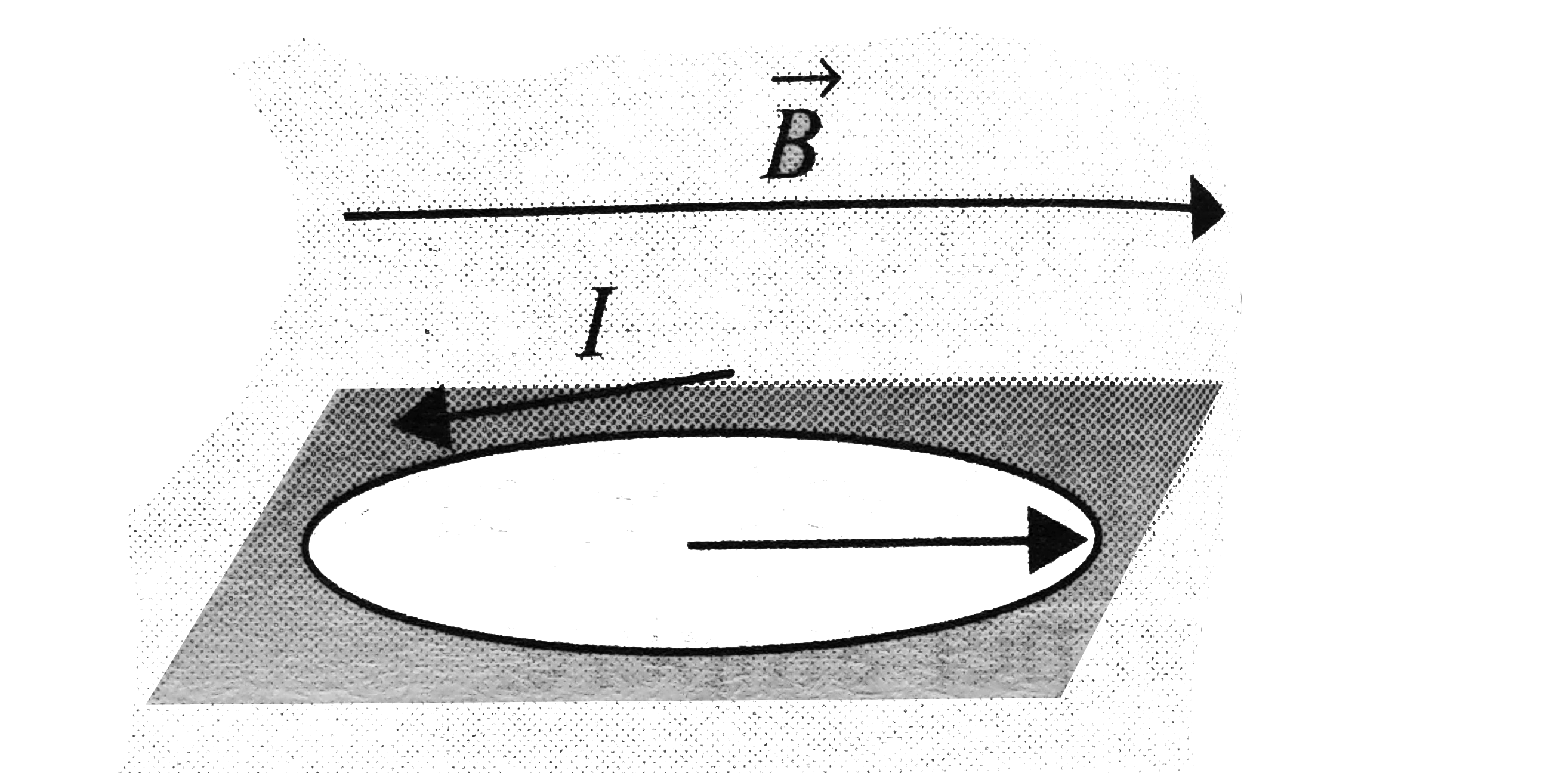
The loop will start to lift off when the magnetic torque equals the gravitational torque as shown in Fig.
The magnetic torque acting on the loop,
.
The gravitational torque exerted on the loop, .
So,
 .
.
Topper's Solved these Questions
- MAGNETIC FIELD AND MAGNETIC FORCESBOOK - CENGAGE PHYSICSCHAPTER - MAGNETIC FIELD AND MAGNETIC FORCESEXERCISE - Exercises Subjective
10 Videos
- MAGNETIC FIELD AND MAGNETIC FORCESBOOK - CENGAGE PHYSICSCHAPTER - MAGNETIC FIELD AND MAGNETIC FORCESEXERCISE - Exercises Single Correct
70 Videos
- MAGNETIC FIELD AND MAGNETIC FORCESBOOK - CENGAGE PHYSICSCHAPTER - MAGNETIC FIELD AND MAGNETIC FORCESEXERCISE - Exercise 1.2
13 Videos
- KINETIC THEORYBOOK - CENGAGE PHYSICSCHAPTER - KINETIC THEORYEXERCISE - Question Bank
31 Videos
- Magnetism and MatterBOOK - CENGAGE PHYSICSCHAPTER - Magnetism and MatterEXERCISE - Question Bank
50 Videos
Similar Questions
A rigid circular loop of radius r & mass m lies in the xy plane on a flat table and has a current I flowing in it At this particular place the earth's magnetic filed is B=Bxˆi+Byˆj How large must I be before one edge of the loop will lift from table
Repeat if ,→B=−→Bxˆi+−→Bzˆk .
View SolutionA circular loop of radius a, carrying a current I, is placed in a tow dimensional magnetic field. The centre of the loop coincides with the centre of the filed The strenght of the magnetic field at the pariphery of the loop is B. find the magnetic force on the wire.
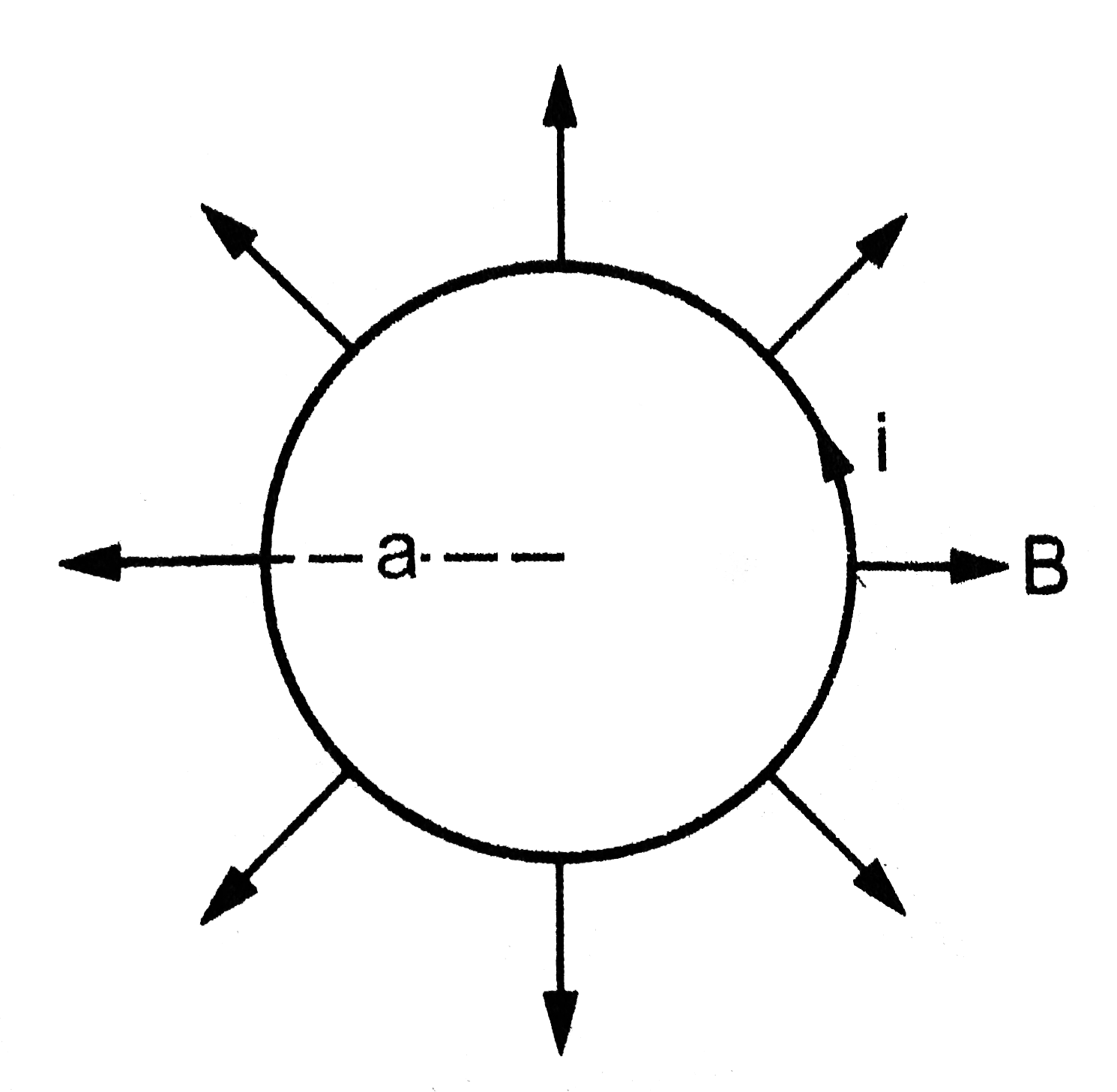
View Solution
Knowledge Check
A circular loop of radius r, carrying a current I lines in y - z plane with its centre at the origin. The net magnetic flux through the loop is
Adirectly proportional to r.BzeroCinversely proportional to r.Ddirectly proportional to I.A circular loop of radius 0.05 m carries a current of 1.0 A. The magnetic moment of the loop is .
A1.32×10−4A−m2B7.85×10−4A−m2C2.62×10−4A−m2D5.25×10−4A−m2A square loop of wire carrying current I is lying in the plane of paper as shown in Fig. 1.141. The magnetic field is present in the region as shown. The loop will tend to rotate
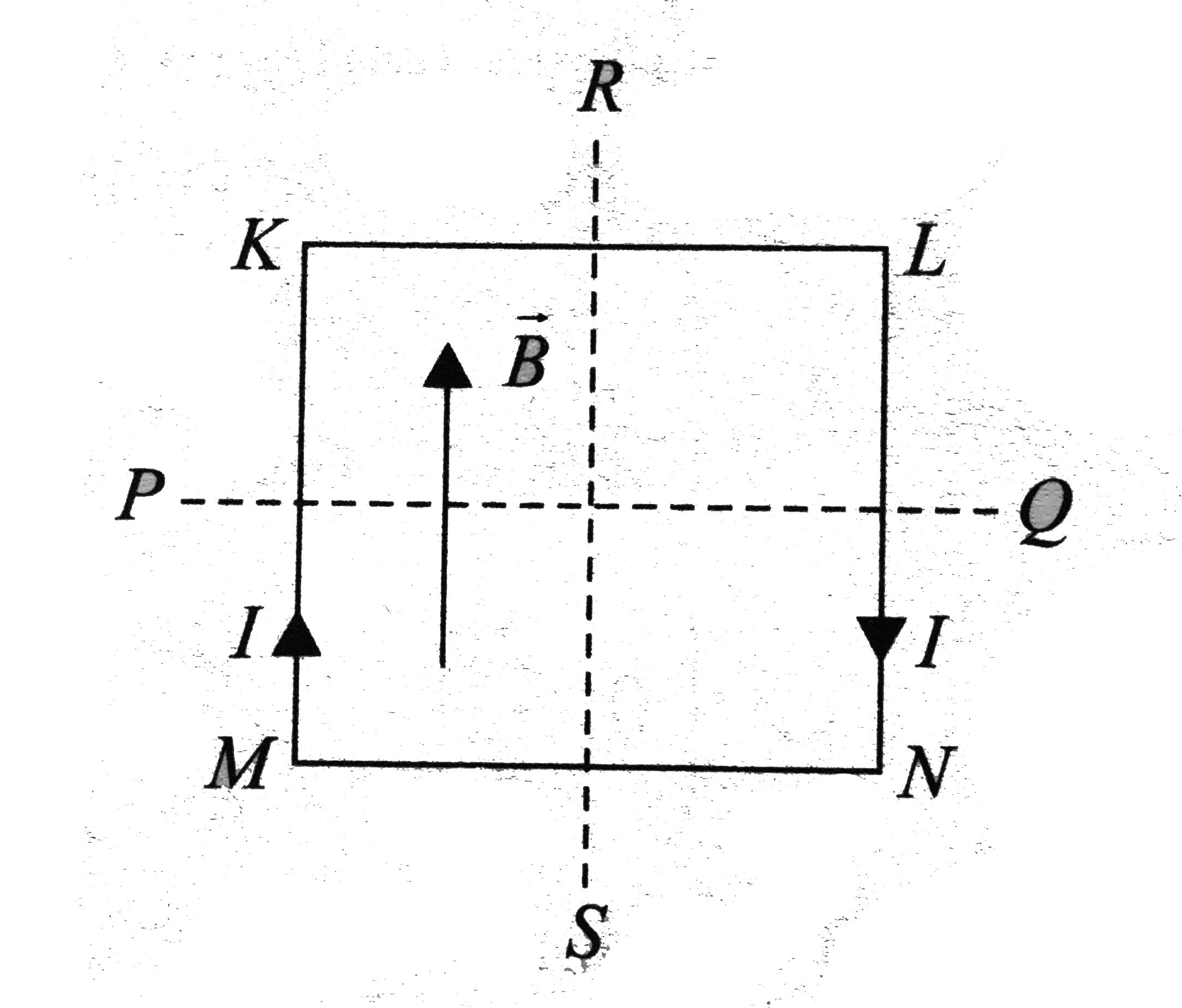 Aabout PQ with KL coming out of the pageBabout PQ with KL going into the pageCabout RS with MK coming out of the pageDabout RS with MK going into the page
Aabout PQ with KL coming out of the pageBabout PQ with KL going into the pageCabout RS with MK coming out of the pageDabout RS with MK going into the page
A current carrying loop of radius R and mass 'm' is placed inside a uniform magnetic field an shown

View SolutionA wire loop carrying current I is placed in the x−y plane as shown in the figure. If an external uniform magnetic field →B=Bˆi is switched on, then the torque acting on the loop is
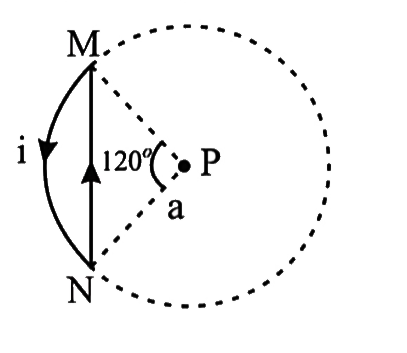
View SolutionA circular loop has radius R and carries current I2 in a clockwise direction (as shown in Fig.) The centre of the loop is at a distance D above a long, straight wire. What are the magnitude and direction of the current I1 in the wire if the magnetic field at the center of the loop is zero?

View SolutionA part of a long wire carrying a current i is bent into a circle of radius r as shown in figure. The net magnetic field at the centre O of the circular loop is
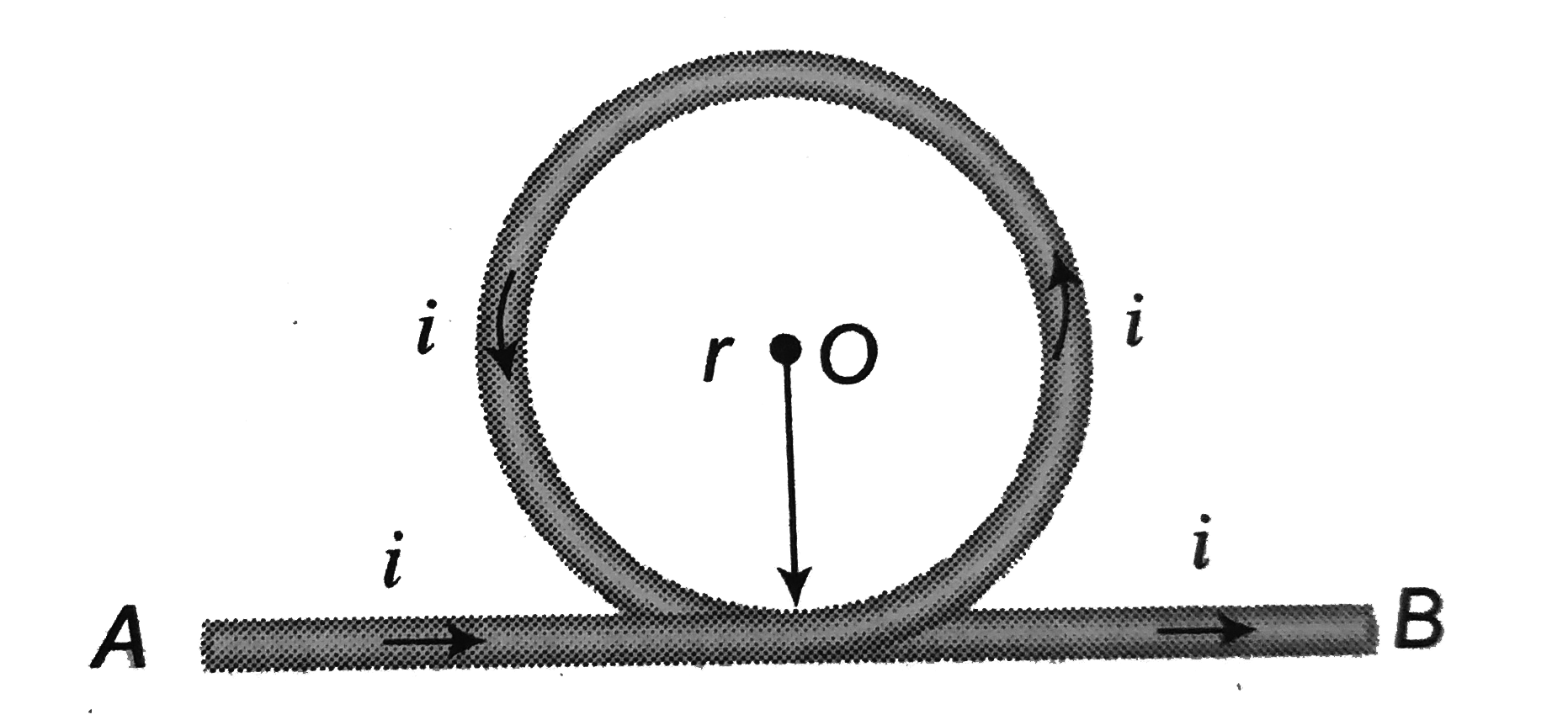
View SolutionA circular loop of mass m and radius r in X-Y plane of a horizontal table as shown in figure. A uniform magnetic field B is applied parallel to X-axis. The current I in the loop, so that its one edge just lifts from the table is
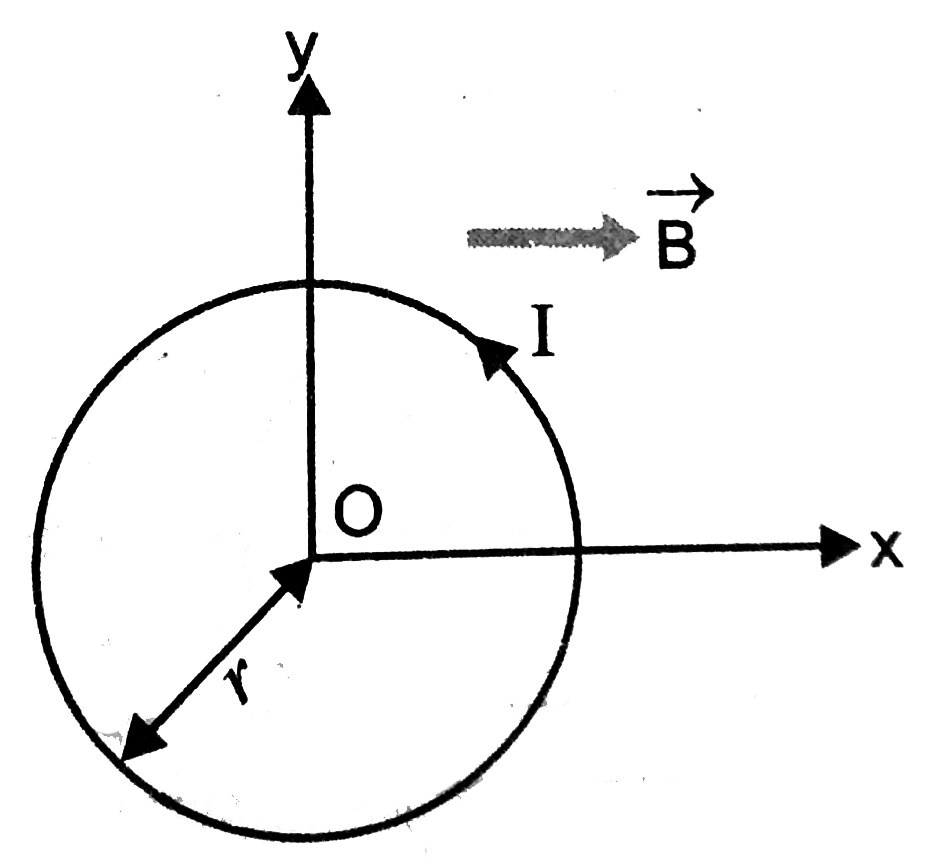
View Solution
